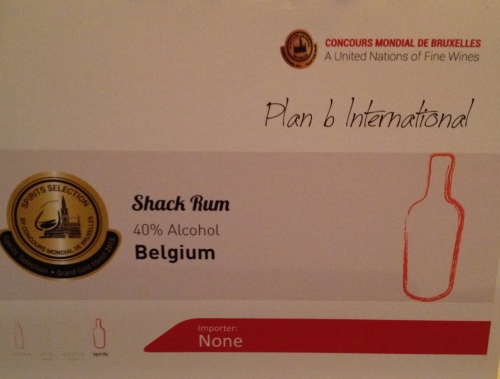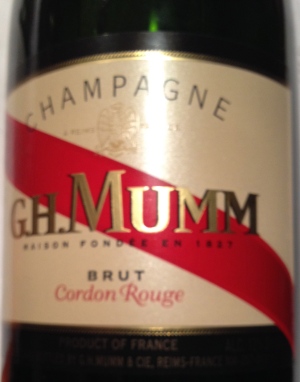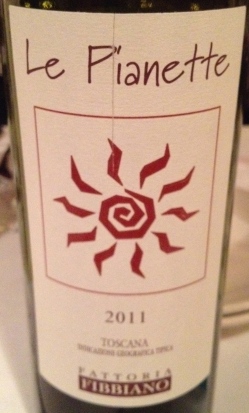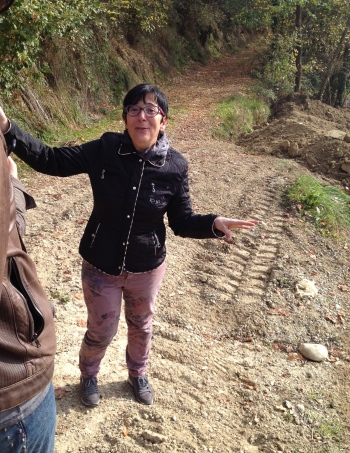Ed McCarthy hosted two memorable Champagne tastings and lunches in December for wine journalists in New York City. For the Wine Media Guild event at Felidia Restaurant, Ed spoke about 26 Non Vintage Brut Champagnes. Three weeks later, Ed hosted the second event, held at the Brasserie, where he presented 16 Prestige Cuvee Champagnes for the NY Wine Press. Ed, author of “Champagne for Dummies,” is known as Champagne Ed.
Harriet Lembeck chair of the NY Wine Press, announced that this was the last year this event would be held at the Brasserie as it will be closing shortly. She thanked Sharon Colabello, the Brasserie’s Director of Catering, for all her help over the years.
Introducing the wines, Ed told us that Prestige Cuvees are made from the finest and the most costly grapes from the best vineyards, usually from all Grand Cru or a blend of Grand Cru and Premier Cru villages. They are aged longer in the producers’ cellars than other Champagnes. The typical Prestige Cuvee ages for five to eight years before release.
Ed said that 2002, 2004, 2006 and 2008 were excellent vintages in Champagne. He also believes that 1996 was the best vintage of the last 20 years.
First Flight with Hors d’Oeuvres
Lanson “Extra Age” Brut NV magnum It is a blend of special vintage years 2000, 2002 and 2004 bringing together the best Champagne Crus using traditional vinification methods. The Pinot Noir comes from the best plots of Verzenay and Bouzy. The Chardonnay from the Cote des Blancs, Chouilly, Avize, Oger and Vetrus. Nice citrus flavors and aromas with a touch of white peach and pear. $190
Andrê Jacquart Blanc De Blancs Brut Nature Grand Cru NV. No malolactic fermentation takes place, a minimum of 5 years on the lees before disgorgement and zero dosage. 70% of the wine is aged in old Burgundy barrels. Ed said that the grapes come from the best villages in Champagne. This is a elegant champagne with hints of pear and peach with a long and fruity finish. Ed was very impressed with this champagne and it is a bargain at $60.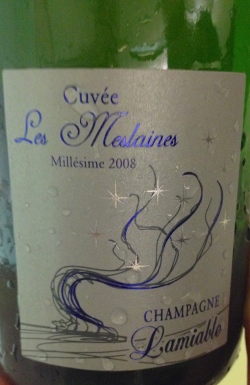
Lamiable “Les Meslaines” Grand Cru 2008 made from 60% Pinot Noir and 40% Chardonnay from 30/35 year old vines from the Grand Cru terroirs of Bouzy and Tours-sur- Marne. The soil is clay and limestone, the parcel is 6 hectares and the exposure is south. It is at 162 meters with a gentle slope of about 10%. Fermentation in enamel and stainless steel tanks and then malolactic fermentation takes place. Aged for 18 months on the lees. Two to four barrels are used. No new oak. Dosage 8g/l. It had hints of apple, brioche, spice and a hint of ginger. Ed said it needed more time $60
Second Flight with Vegetable Carpaccio
Piper-Heidsieck “Rare” Brut 2002 made from 65% Pinot Noir and 35% Chardonnay from twelve 100% rated Grand Cru Villages. This needs at least 15 years from the vintage date to develop fully. It was interesting because I found aromas and flavors of spice and ginger with citrus fruit and good acidity. $155
Laurent-Perrier “Grand Siecle” NV made from 50% Chardonnay and 50% Pinot Noir from 3 different vintages. 12 of the most prestigious villages supply the grapes and only the best plots are selected, as are the finest musts from the pressings. The blended wine is aged during the second fermentation on the yeast for about five years. It has tiny bubbles and complex aromas and flavors that make it go very well with food. $135
Veuve Clicquot “La Grande Dame” 2006 made from 62% Pinot Noir and 38% Chardonnay. Verzenay/Avize are the two dominate crus in the blend of eight grand crus from Ciicquot’s own 100% rated Grand Cru Vineyards on the Còte des Blancs and the Montagne de Reims. It has hints of white peaches, apricots and brioche. It needs two or three years from release in order be at its best. $155
Dom Ruinart Blanc De Blancs Brut 2004 Made primarily with premier crus from the Cöte des Blanc and Montagne de Reims. Has both elegance and finesse with hints of fresh fruits, citrus and white peaches. $135
Third Flight with Halibut with Braised Leeks and Champagne Sabayon
Taittinger “Comtes de Champagne” Blanc de Blancs 2006. The grapes are pressed immediately in presses located in the vineyards. The first pressing, known as the “cuvee” is followed by two more pressings known as the first and second “tailles”. Only the juice from the “cuvee” goes into this wine. Temperature controlled fermentation takes place and about 5% of the wine is matured for a few months in 225 liter new oak casks. Prior to disgorgement the wine is aged for 9 or 10 years. This is their flagship Champagne. Ed described it as being full and rich. It was toasty with hints of white fruit, good acidity and a long lingering finish. $130
Louis Roederer “Cristal” Brut 2007 made from 55% Pinot Noir and 45% Chardonnay with grapes from Roederer’s own vineyards, almost all of which are Grand Cru. Ed said it needs 15 years from the vintage date before it is really ready to drink, $200
Perrier Jouet “Belle Epoque” Blanc de Blancs Brut 2002 This was by far the most expensive Champagne at the tasting. The grapes come from the best vineyards and Ed believes that it is worth the money and one of the best Blanc de Blancs made. He also said that 2002 was an excellent vintage for Champagne. $350
Pascal Doquet “Le Mesnil Sur Oger” Blanc de Blancs Grand Cru 2002 The vines range from 3 to 77 years-old averaging around 37 years as of 2014. The soil is chalky in the Le Mesnil-sur-Oger in the heart of the territory. It is a 1,67 ha parcel with an eastern exposure. The training system is Taille Chablis. The yield is 30% lower than the maximum permitted by Champagne. Malolatic fermentation takes place. Aged for 6 months and then 5 months on the lees. 36% aged in barrels. It has hints of toasted brioche, raisins, spice and apple with good acidity. Ed said that this wine needs more time and I agree. Dosage 5g/l. The winery is certified organic, indigenous yeast is used and the grapes are hand harvested. $85
Fourth Flight — Duck á l’Orange
Moet & Chandon “Dom Perignon” Brut 2006 made from equal amounts of Chardonnay and Pinot Noir. The grapes come from five Grand Cru villages and one Premier Cru village. Ed wrote in his book Champagne for Dummies – the wine’s “…trademarks are its exquisite balance, its creaminess, its elegance, its very fine tiny bubbles and its complex flavors.” He was also right on the mark when he said, “With age, Cuvee Dom Perignon develops aromas and flavors of toast, coffee and honey.” $150
Bollinger “ La Grande Anneë” Brut 2004 made from 63% Pinot Noir and 37% Chardonnay. This was one of my top wines. Both Ed and I felt that it would age very well. It is intense, concentrated, rich Champagne with aromas and flavors of toasted brioche. This is the Champagne that I drank the most. $125 
Henriot Cuvee “Des Enchanteleurs” Brut 2000 made from Chardonnay and Pinot Noir from six of the most prestigious Grand Cru vineyards. Ed said it was excellent and one of his favorites. It was also one of mine. It is rich with citrus aromas and flavors and hints of wild peach, hazelnut, and a touch of honey. It is aromatic with a great finish and aftertaste. It was Tom Maresca’s favorite. $165.
Pol Roger Cuvee Sir Winston Churchill” Brut 2004 made from 70% Pinot Noir and 30 % Chardonnay from their Grand Cru vineyards. The remuage (riddling) is done by hand, a rarity in Champagne today. Ed felt it still needs at least 4 or 5 more years to be ready. He described it as being rich, firm and austere but also with finesse and complexity. Ed said that it was created in homage to Sir Winston Churchill mindful of the qualities he sought in his Champagne: robustness, a full-bodied character and relative maturity. This was another of his favorite wines and I have to agree. $250
Krug Brut Grande Cuvée NV made from 45/55% Pinot Noir, 15/20 Pinot Meunier and 25/35 Chardonnay–the percent depends upon the vintage. They blend about 120 wines from 10 or more different vintages and it is aged for at least 6 years in the cellars. All of their Champagnes are aged in used small oak barrels. They are all prestige cuvees made from Grand Cru and Premier Cru villages and are aged longer before release. The overall rating for the vineyards is 98% with Krug’s own vineyards rating 100%. As Ed said obviously this is not just another NV Champagne. It is Michele’s favorite. $135
Though we all have preferences in style, I would be more than happy to enjoy any of these excellent Champagne























